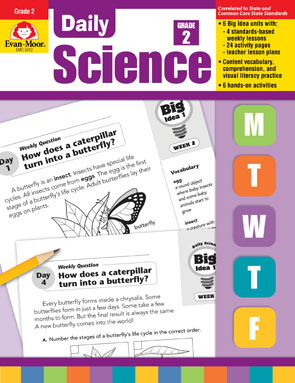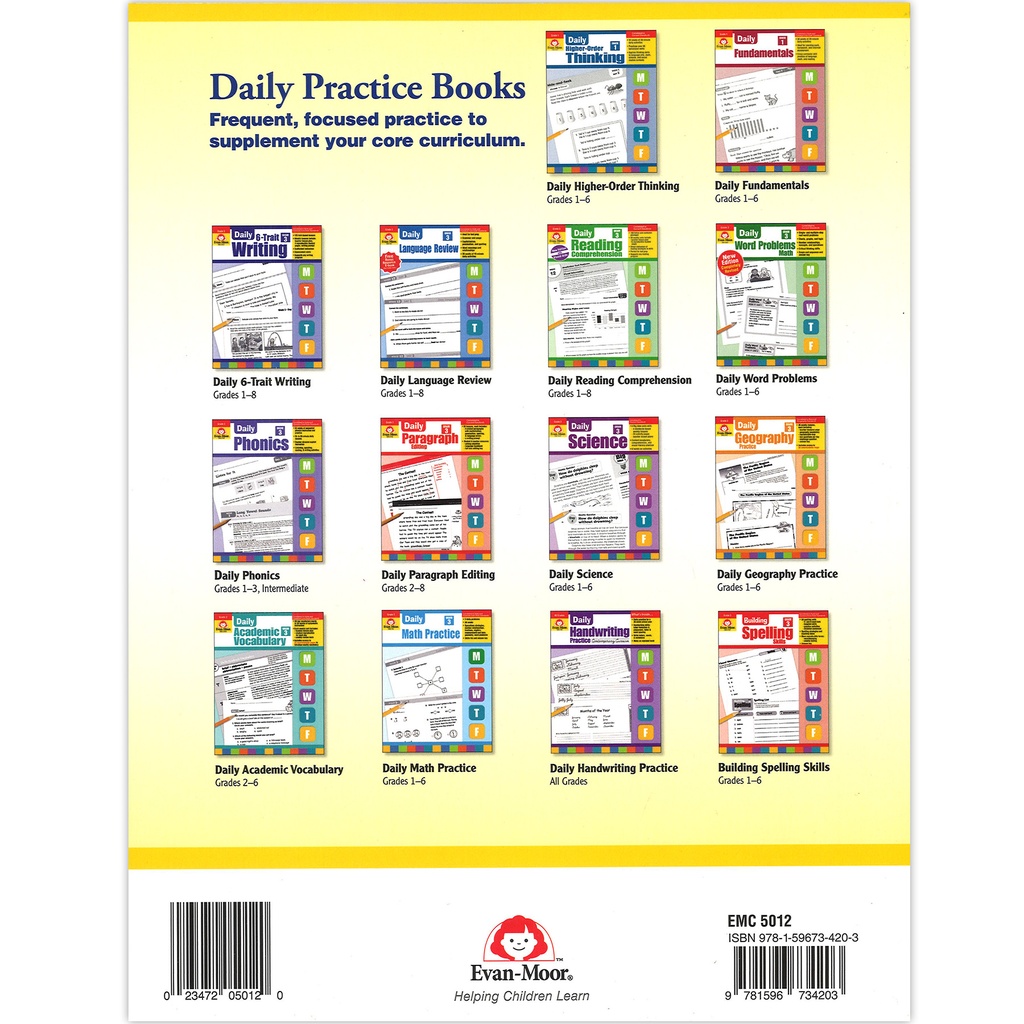Daily Science Grade 2
Help your grade 2 students develop a genuine understanding of standards-based scientific concepts and vocabulary using the 150 engaging activities in Daily Science! A variety of rich resources, including vocabulary practice, hands-on science activities, and comprehension tests in multiple-choice format, help you successfully introduce students to earth, life, and physical science concepts. 192 pages.
This 2nd-grade teacher’s print edition contains 30 weeks of concentrated science lessons and hands-on activities that give students a solid foundation of standards-based science concepts while helping to improve science literacy. Students will learn and use relevant science vocabulary as they explore the answers to intriguing scientific questions like How does a caterpillar change into a butterfly? and Why can't an apple tree grow oranges? Daily Science is an excellent supplement to any 2nd-grade science curriculum.
30 weeks of instruction cover the following standards-based science topics:
Big Idea 1: Different kinds of living things have different life cycles.
Week 1: Why do kangaroos carry their babies in pouches?
Week 2: How does a caterpillar change into a butterfly?
Week 3: How do tiny seeds turn into giant trees?
Week 4: Why do some plants have flowers?
Week 5: Unit Review
Big Idea 2: Plants and animals look a lot like their parents.
Week 1: What's the difference between foxes and wolves?
Week 2: Why can't an apple tree grow oranges?
Week 3: How can a spotted cat have striped kittens?
Week 4: Why don't all grapes have seeds?
Week 5: Unit Review
Big Idea 3: Earth contains rock, water, and air. People use all of these things.
Week 1: How far up does the sky reach?
Week 2: How much water is there on Earth?
Week 3: Why do beaches and deserts have sand?
Week 4: Why do people recycle?
Week 5: Unit Review
Big Idea 4: The sun, moon, and stars all have predictable patterns of movement.
Week 1: What happens to the sun at night?
Week 2: Why aren't stars always in the same part of the sky at night?
Week 3: Is the moon a planet?
Week 4: Why does the moon change shape?
Week 5: Unit Review
Big Idea 5: Sounds are made by vibrating objects. Sounds can travel through solids, liquids, and gases.
Week 1: How do crickets chirp?
Week 2: Where do echoes come from?
Week 3: Does sound travel underwater?
Week 4: How do animals without ears hear?
Week 5: Unit Review
Big Idea 6: Magnets make some things move without touching them. They also attract or repel other magnets.
Week 1: Why does a magnet stick to a refrigerator but not a window?
Week 2: How can magnets move things without touching them?
Week 3: Why are some magnets stronger than others?
Week 4: How does a compass work?
Week 5: Unit Review





